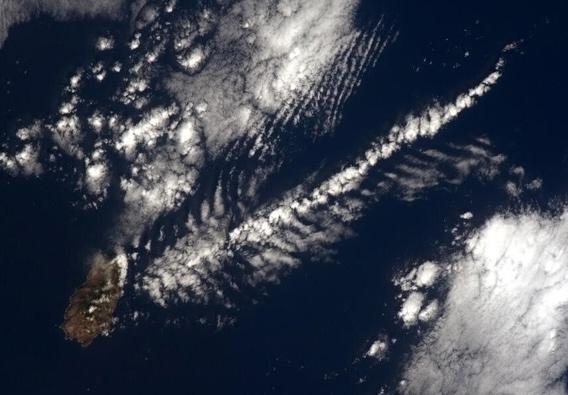So, International Space Station Astronaut Chris Hadfield—commander of Expedition 35, so you better take him seriously, folks—tweeted a picture of a volcanic island in the Atlantic that looks like the head of a giant fishbone skeleton made of clouds.
Still with me? Well, see for yourself:

Image credit: NASA
I don’t know what to add to this. I mean, it looks like the island is the head of a giant fishbone skeleton made of clouds.
FYI, the island is Saint Helena, an isolated volcanic isle about 16 x 8 kilometers (10 x 5 miles) in size. And by isolated, I mean yikes: The nearest large landmass is 2000 kilometers away. It’s about a third of the way across the Atlantic west from Africa to South America. The volcano hasn’t erupted for millions of years, so it’s quite dead. About 4000 people live there.
I love the cloud pattern. These clouds are called cirrocumulus, and are sometimes referred to as herringbone (if they appear as long lines like seen here) or mackerel clouds (because they can also form small clumps that look like fish scales). They’re made of tiny ice crystals. If they are heated from below the air rises (this is called convection) as the ice crystals melt, causing gaps in the clouds to form. If there’s also a steady wind—as there is over Saint Helena island—the convection cells get blown downwind, forming the long fishbone appearance.
I see these all the time forming over the Rockies west of my hometown of Boulder. The pattern can stretch for dozens of kilometers, but I’ve never seen them look quite as much like an intact fish skeleton before; this looks like it could’ve been taken from a Bugs Bunny cartoon. It even has fins!
Commander Hadfield tweets pictures from space like this all the time. Follow him on Twitter; trust me. You’ll be glad you did.